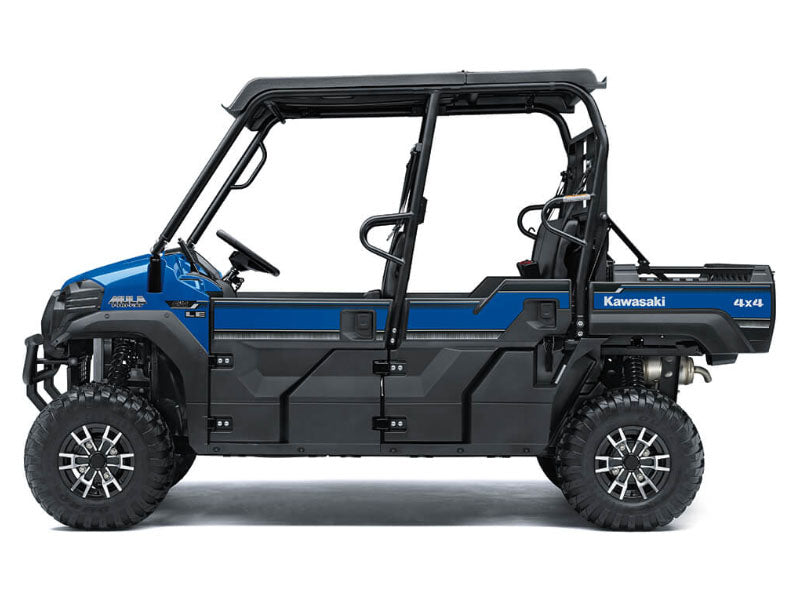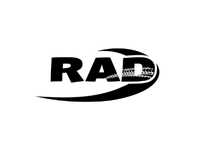How to Install a Radio in a Kawasaki Mule
Kawasaki Mules are great machines. They are reliable durable, and they can handle almost anything. But, if you want to add some entertainment to your long ride, why not install a radio? It will increase the value of your vehicle and make it safer, more comfortable, and even more fun to drive.
This article will show you how to install a radio in a Kawasaki Mule using essential tools and common sense. We will also cover the various types of radios available for this application; we'll explain what each one does and provide links to further information about them if you'd like.
Of course, if you have mechanical knowledge already, you can do without help. But if you don't, then, by all means, read on.
Steps To Follow When Installing a Radio in a Kawasaki Mule
You do not need any special equipment or knowledge. This process is straightforward if you follow these steps:
1) Check Your Vehicle for Existing Radios
Before proceeding with this installation, be sure that there is no existing equipment on your machine. The first thing you should check is the dash area. As mentioned above, this area has an AM/FM antenna.
There may also be speakers built into the headliner. But don't count on that, especially since the Mules have no such designs. So at least check out your dash area. Also, double-check behind the seatbacks where you can mount the speakers.
If you find nothing, then proceed to Step 3.
2) Remove Old Equipment
First, you must remove whatever existing radio system you found in your dash. You're going to replace it with something better anyway, so save yourself time and money by just getting rid of it.
3) Decide What Type of System You Want
Now that you know where everything is, you can decide which type of radio would work best. Here are the three main choices:
- CD player: A classic choice for adding functionality to your ride. These usually plug directly into your battery. However, it would be helpful to use battery jumpers whenever possible.
- MP3 Player: These units store music digitally instead of CDs, allowing you to listen to music in greater detail. Some older models use FM transmitters to play their media, while newer ones use Bluetooth technology to stream audio over the Internet through your smartphone.
Both kinds of systems can fit snugly under your dash, although FM transmitters generally require more room than Bluetooth devices.
- Satellite radio: Like CD players, satellite radios broadcast digital signals through dedicated satellites instead of terrestrial stations. Again, however, they can only receive signals from those satellites.
For example, SiriusXM requires a receiver installed in your car, plus a subscription fee. On the other hand, you can get free service from XM or Sirius if you live near a major city.
4) Mount the New Unit
The next step is putting the new unit into place. The mounting bracket should not replace the old stereo with the original factory speaker. Most aftermarket stereos come preassembled, but if yours doesn't, you should still be able to connect the wires between the two quickly enough. But, again, be careful not to break loose anything important.
5) Test the Sound Quality
Please turn it on once you make all the connections and ensure everything works properly. Once everything seems promising, it's time to call up some tunes. Note that most radios will have preset songs these days, so you shouldn't need to change any settings except volume.

Pro Tips When Installing a Radio in Your Kawasaki Mule
Some of the things to have at your fingertips while installing a radio in your Kawasaki Mule might include:
1) Be Patient
There will always be some amount of frustration involved when trying to install a radio in your Mule. But try not to let it stress you out. Many people have had a great experience with them, and others struggled for hours before finally figuring out how to do it.
Don't allow the fear of failure to stop you from doing what you want to do. It'll eventually work out.
2) Have Multiple Cables
One cable might sound like an adequate number, but it won't cut it when your wiring gets snarled during installation. So always keep spare cables around at home or wherever you do all of your electrical work. That way, nothing is standing in the way of connecting the new radio.
3) Use a Drill
If you don’t already own one, now’s the time to buy one. There’s no better way to make a hole in the floorboards of your Mule than to use a drill. Of course, the best drill to use will depend on your preference, but chances are you’ll find yourself using either a cordless drill or a hand-held drill.
Make sure that whichever one you pick up first has a variable speed attachment. Otherwise, you might end up drilling holes by mistake.
4) Use a Screwdriver
Screwdrivers come in different sizes, shapes, and designs, so there’s bound to be one that’s perfectly suitable for whatever task you need. You may even find that having several available makes life easier because you never have to worry about running out of ones you know will work for the job.
5) Know Your Tools
Knowing which screws go where goes a long way towards making your project run smoothly. If you purchase an electrician's tool kit, every set comes with various size screwdrivers and a variety of other necessary items.
Having extra bits on hand means you won't have to pause midway through an installation to grab something. Also, knowing which type of screws to use ensures that you don't accidentally strip them off the wall.
6) Keep Track of Your Progress
You probably won’t see much point in keeping a record of your progress unless you plan to sell the Mule, but if there are any problems along the way, you can refer back to this list of instructions and figure out what went wrong.
7) Know Where the Brake Switch Is
The brake cable should connect directly to the brake pedal itself. So whether you drive left or right foot on your Mule, the front brake pedal will be located somewhere around the driver's seat.
The brakes require a slight push to engage, and the pedal feels a lot stiffer than its counterparts found on motorcycles. It is another reason why it's essential to leave plenty of room between the vehicle's frame and the pedals.
8) Check for Clearance
Your radio needs to be able to fit into the space underneath your dash without touching anything. Most radios these days plug into an auxiliary input jack, meaning they can accept power via either of two wires located closer to the radio itself.
9) Connect Everything
Once you've got everything well installed, take a moment to check to see that everything fits together seamlessly. A few things that could cause issues might include:
Not securing the battery correctly. No matter how careful you are, you can't prevent the battery from getting punctured while installing your system.
Improper placement of the antenna. It takes skill to get good reception even when working with an antenna installed correctly, but not everyone knows the efforts involved for optimal outcomes. For instance, placing the antenna too close to the ground usually causes signal loss.
10) Drive Slowly
After all the hard work, don't expect that you can jump back behind the wheel and start driving again. Your engine should still be warm since you plugged it in during installation. Give your new device at least ten minutes to cool completely before pulling away.
11) Practice
After finishing the car audio project, the last thing anyone wants is to realize that they're missing some fundamental aspect of the experience. That's why it's wise to practice your new setup as often as possible.
Taking those detour trips and listening to your favorite tunes is excellent to determine if things sound okay. However, you might also want to consider using your test equipment simultaneously so you can make sure everything works the way it should.
Frequently Asked Questions
How far apart do I need to place my speakers?
Different people enjoy different types of music depending on their mood, so it depends on what sort of sounds you like best. However, we recommend aiming to keep them no closer than four inches.
It's also worth pointing out that it makes sense to place them farther away from your ears if you listen to high-pitched sounds such as bass notes since they tend to travel further anyway.
Does a Kawasaki Mule come standard with a CD player?
Most Kawasaki Mules come with factory-installed CDs; however, this isn't always the case. If yours doesn't have one, there's no need to panic – head over to any local retailer and grab yourself a set of discs.
There's nothing wrong with having multiple old classics on hand. After all, you never know when something interesting may happen.
What is the AC outlet power rating?
AC outlet power ratings aren't relevant for car audio installers. They only pertain to air conditioning units and wall outlets, which shouldn't affect anything. Ensure you put every wire where it belongs instead of risking potential damage due to improper wiring.
Is a radio necessary? Does it improve quality?
If you plan to keep your existing stereo intact, you probably don't need a separate radio to complement it. It's entirely possible to connect one to a current receiver by running wires directly into your vehicle's inputs from its rear ports.
On top of that, many radios are now capable of showing information about your vehicle without taking up valuable display space. But, of course, you don’t want to skimp on quality either; otherwise, you could end up spending more money on repairs later down the line. And, of course, we have tons of Kawasaki accessories right here.
Conclusion
A radio in a Kawasaki Mule isn't necessary – but it will enhance the overall experience. The article has laid out a helpful set of guidelines for choosing one that suits your needs. You can now get down to business. Check out our guide on installing a radio in a Kawasaki mule and learn more about installing car audio systems.
